Bears BreechesAcanthus mollisHeight: 3' average mature height Hardiness Zones: 7-8 Find my zone Aspect: mostly shade to afternoon shade
Size Availability
Bear's Breeches or Oyster Plant is a shade loving and drought tolerant species native to arid landscapes. Leaves are evergreen in zone 8 and up, dies back in zones 6 and 7 in harsh winters and re-sprouts in the spring. Will grow in zone 6 if given a semi-protected area in well drained soil, very cold and wet conditions can rot the roots and is the main cause of plant failure in cold zones. Very easy to grow in warmer climates and requires very little care.
Out of season.
Our main crop of most plants is available starting in late fall.
Additional batches of plugs and quarts are usually added in May.
Many of our plants are propagated in limited quantities and can sell out quickly when posted, get on the notification list below so you don't miss out. Add your email to be notified as soon as we have them back in stock:
This does NOT subscribe your email to any mailing lists, our system will only send an inventory notification message.
Plants are fairly large and will form a clump several feet in diameter. Oyster Plant looks its best when given a bit of room but planted in a semi circle around a much larger plant, such as a small or medium sized tree. The June and July flowers are unique and draw interest even from a great distance, but not nearly as much as the massive leaves which can measure several feet long. The leaves are soft and resemble the texture of a banana leaf, although tougher and less likely to shred in wind especially considering their size. The leaves are much friendlier than of the closely related species,
A. spinosus
which is a plant you do not want to come in direct contact with!
Although this plant will grow in sunny areas in cool climates, medium afternoon shade will produce the most impressively sized leaves. Morning sun will encourage brighter red color in the flowers.
Plants are shipped during the dormant season with the leaves cut off, plant the grown so that it is just poking up out of the ground with the roots spread out as much as possible (avoid bunching up the roots into a tangled ball as much as possible). From the one gallon size you should have a full sized plant in 1-2 years. Fertilize with a slow release pellet in April, our favorite brand is Osmocote.
Propagating Acanthus mollis
/
Bear's Breech
You can divide crowns in late fall, cut off the leaves at ground level and plant the crowns buried at ground level. You can also propagate from root cuttings alone. Roots are thick and travel out away from the plant. In late fall, dig around the plant and cut off roots about a half inch (1 cm) in diameter and three to five inches long. Place horizontally in well drained soil buried about inch down. One of the best materials for planting root cuttings in is the potting soil mix we recommend, use the first mix without the coco coir.
Use this mix for planting root cuttings in
, it's what we use at our nursery for root cuttings.
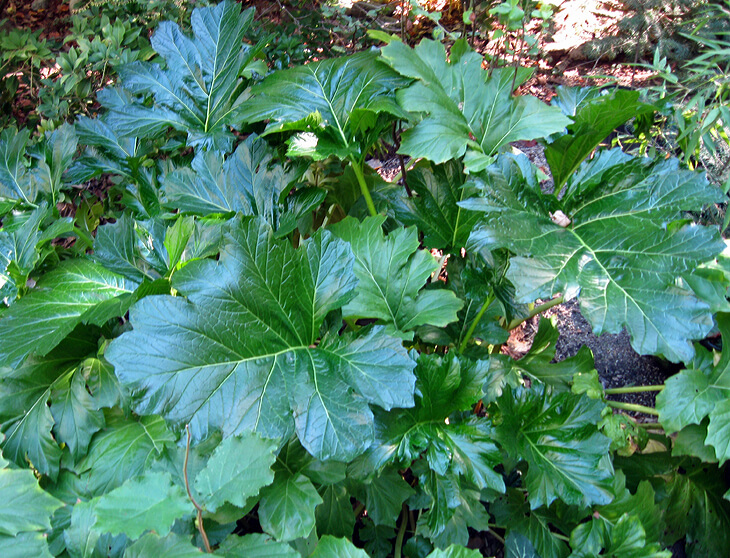
Close up of the massive dark green leaves. The hazelnut leaves at the bottom left are 3 inches long. 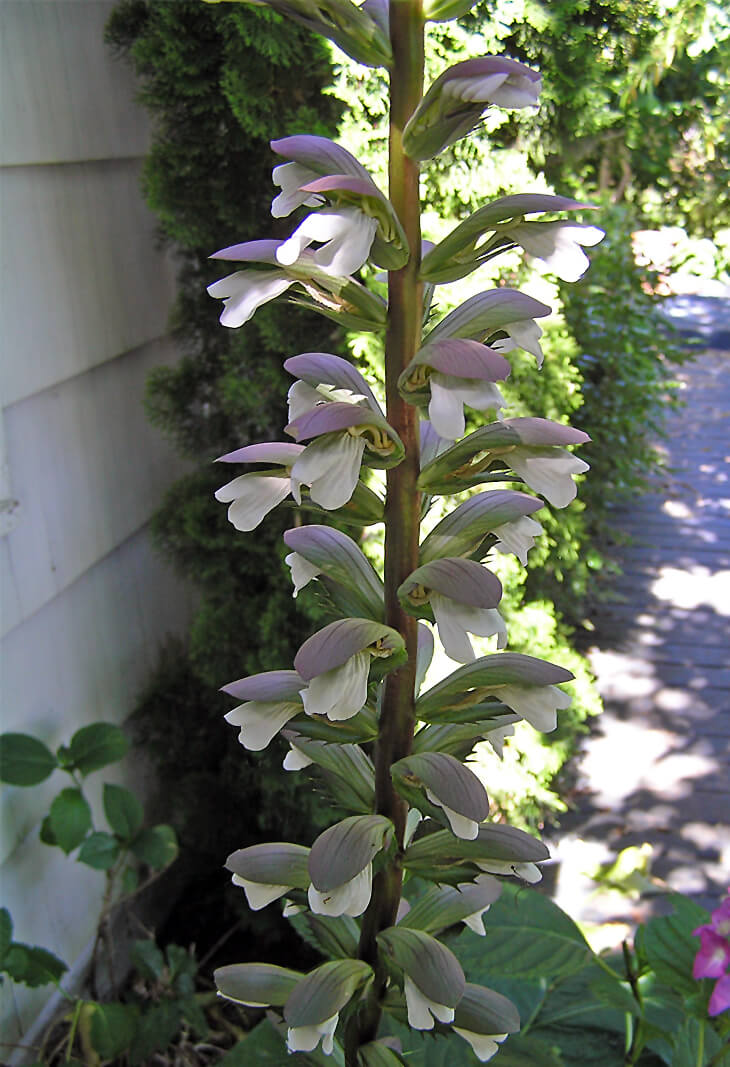
Close up of the flower spike, which can grow to three feet tall. 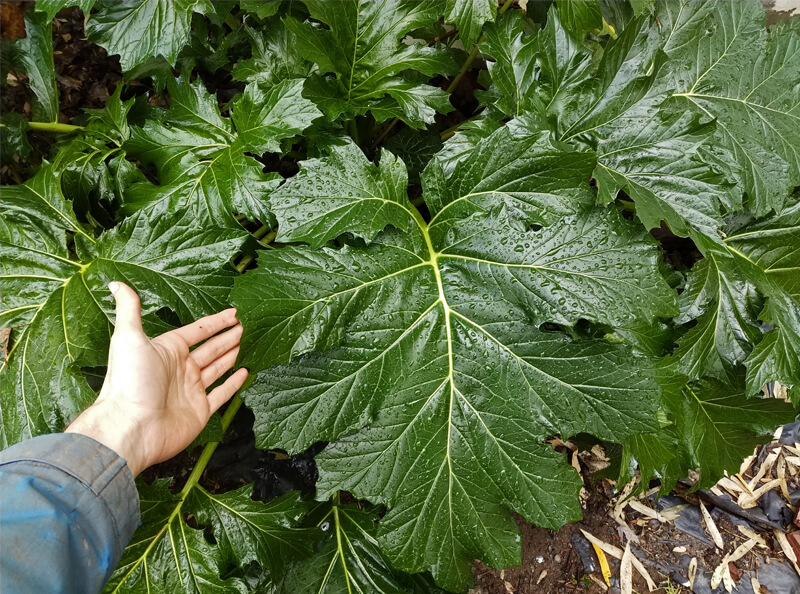
Acanthus mollis - Bears Breeches
Packing Plants For ShippingMost of our plants are shipped bare root while they are dormant from late November through April and ship via the U.S. Postal Service. Bamboo plants can be shipped in their containers year-round by UPS.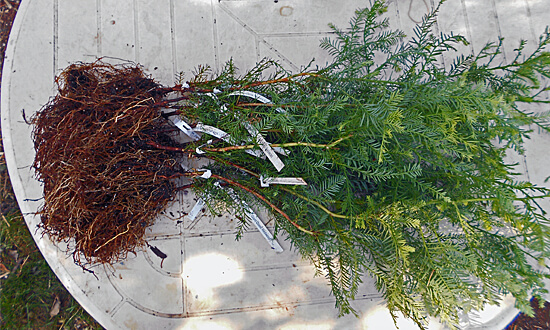 Bare root plants are soaked and wrapped together in bundles. ictured are 10x 24 inch tall Coast Redwoods. 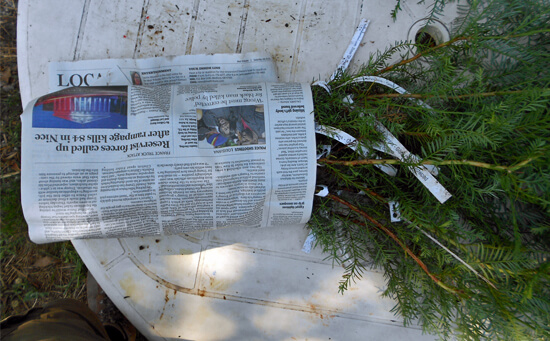 The bundled plants are wrapped in paper and labeled by variety. 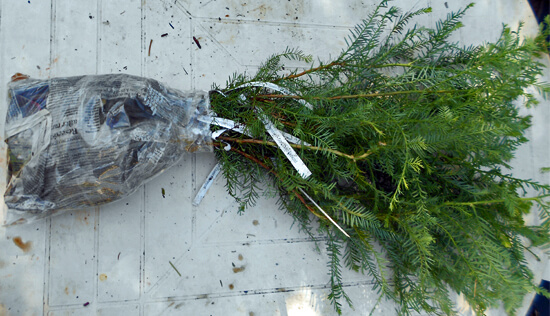 The bundle is wetted and bagged. 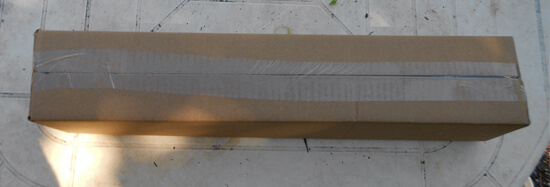 Bundles of plants are secured in long boxes. Pruning and Plant SizesWe prune both the tops and the roots of our plants at least once per year while they are growing in our nursery to ensure they develop a strong, dense form. Regular annual pruning goes a long way to ensure a healthy branching structure and this is often a missed step in many nurseries. Pruning a plant back hard after it has been neglected pruning-wise often results in an irregular branch habit or multiple leaders so we prune early and regularly instead. We also prune the roots of our plants while they are dormant which causes them to produce a much more branched structure and helps to elimate tangled masses that hinder future development. Plants that have been root pruned establish themselves much more quickly than root bound plants. Generally, hardwood plants will be pruned in the winter and conifers will be pruned in the summer.Before shipping plants we prune the tops and roots one last time. Conifers will usually have very little pruning except to balance out long branches. Shrubs are usually pruned to around 1-2 feet tall to encourage low branch development and small to medium sized trees are usually pruned to around 36-40 inches. Pruning trees at this height encourages dominant branches to begin forming around 3 feet from the ground which typically looks the best in most situations. However, if you want a tree to have branching start higher (some city codes require trees to not branch below 4 feet) we have longer boxes available. To request taller trees please contact us at least three days before your ship date. Depending on your location and the shipping routes there may be a fee for oversize package handling (usually about $15 for a 60 inch box). 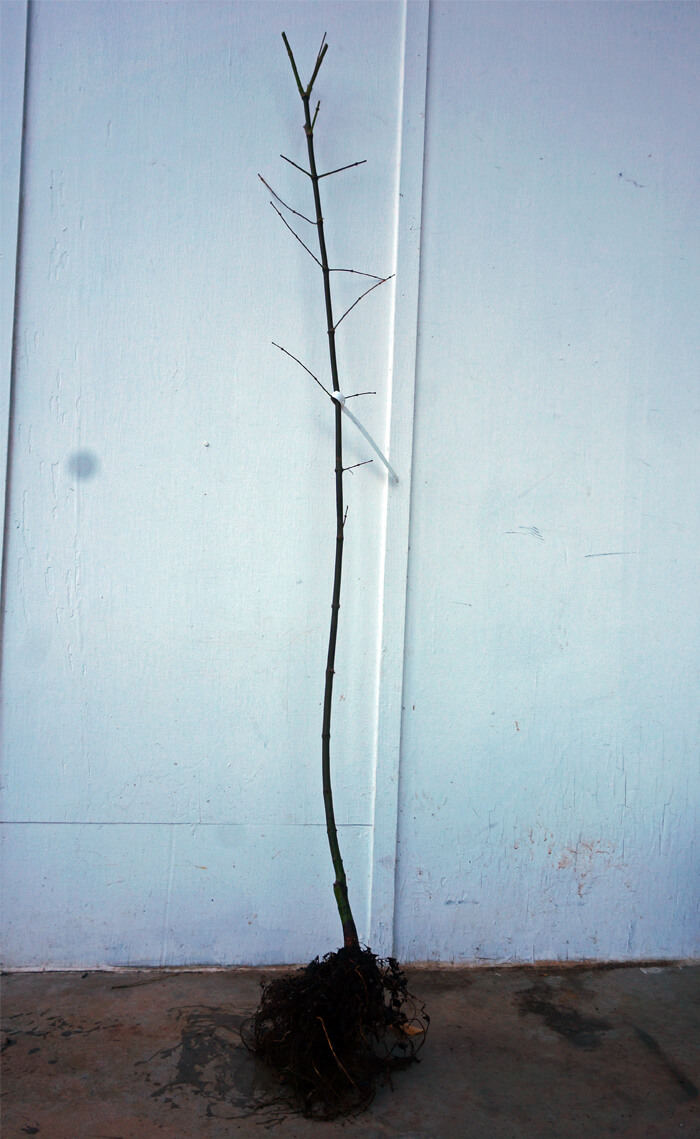 Tall trees (Oaks, Ginkgo, large Maples, etc.) are pruned to 40 inches to encourage crown development from about 36 inches and up 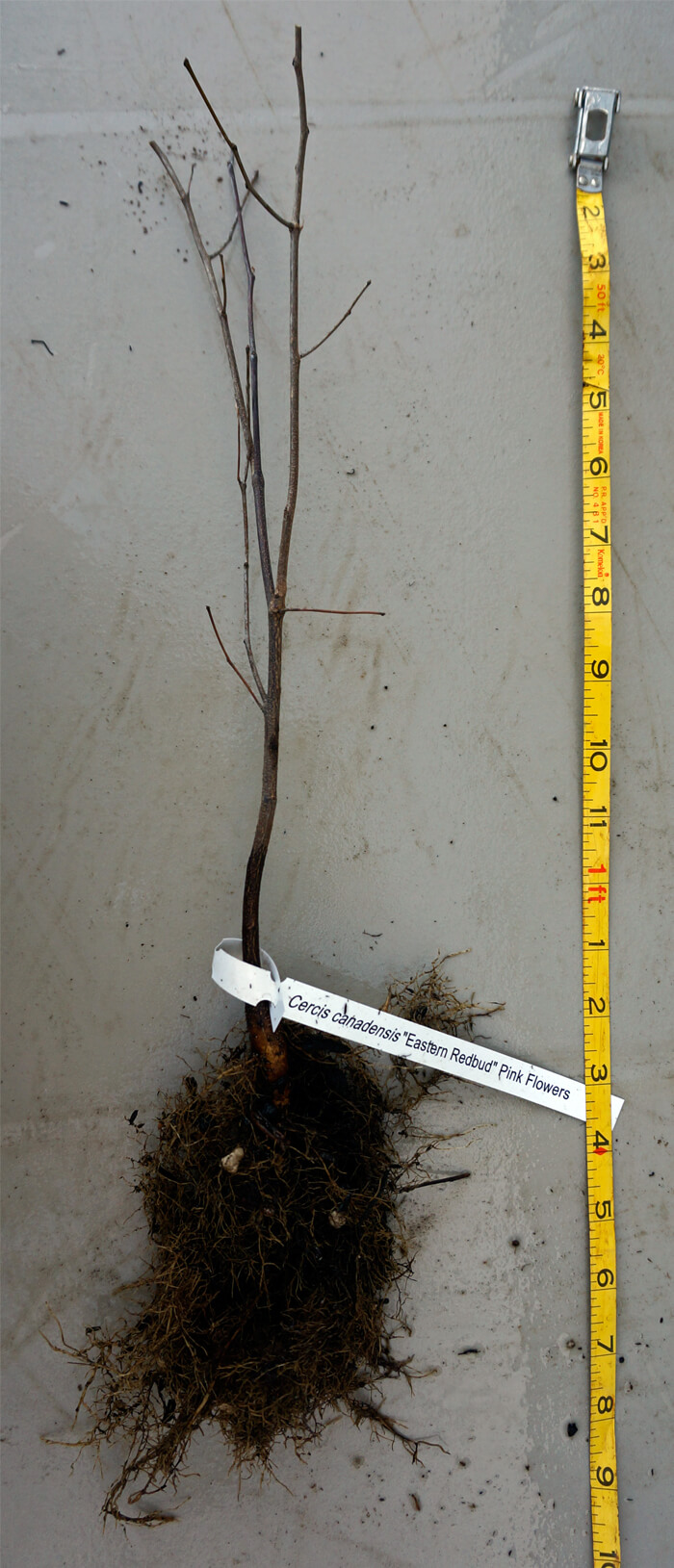 Small and medium trees (short Maples, Redbuds, Stewartia, etc.) are pruned 10-20 inches above the prune line from last year 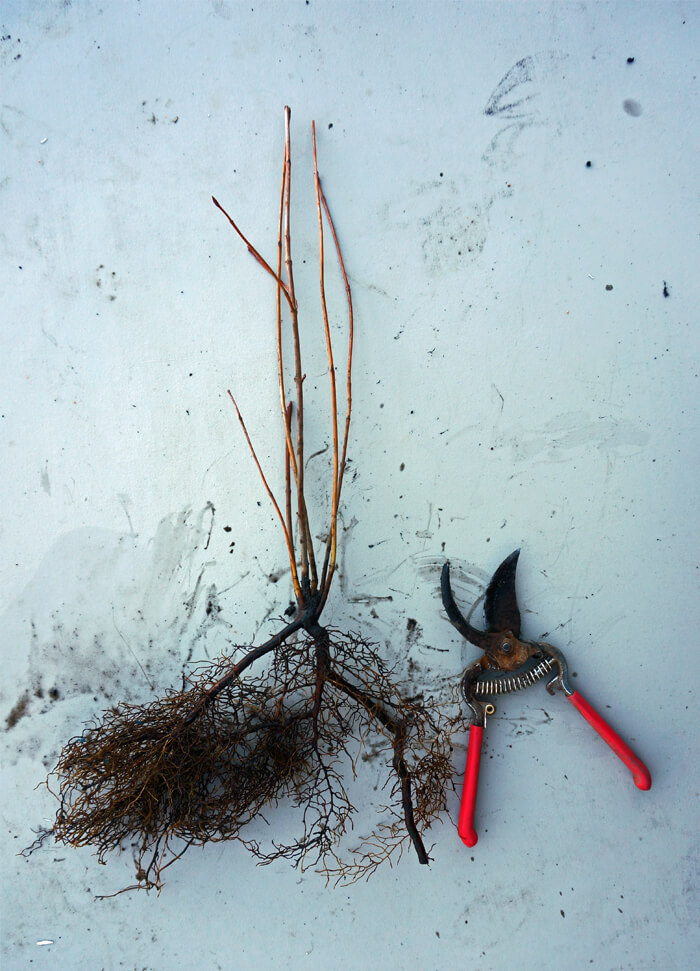 Shrubs (Weigela, Hydrangea, Viburnum, etc.) are pruned to 18 inches tall and root pruned one last time 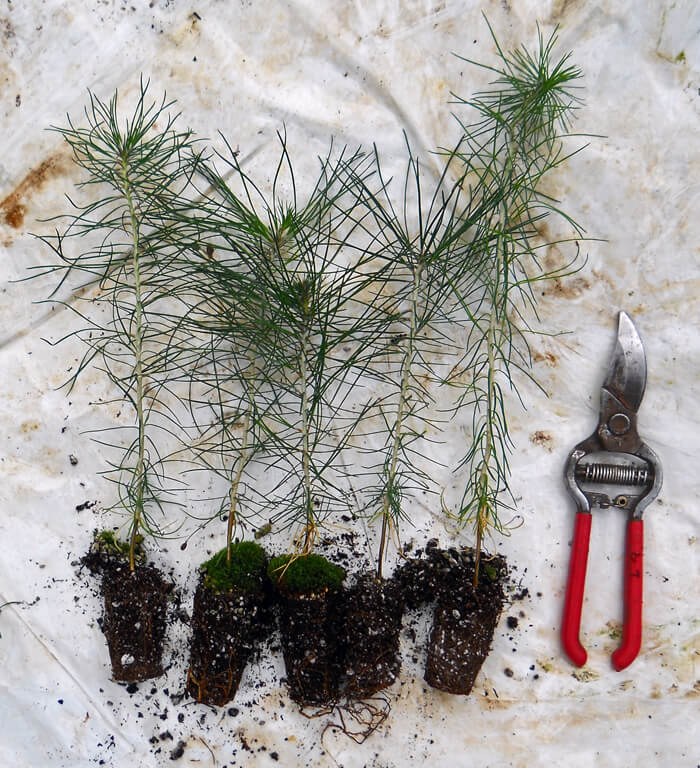 Small plug size Bamboo Plants Are Shipped In Their ContainersBamboo roots are not flexible and so plants have to be shipped in their containers. These plants are heavier and are shipped separately from bare root plants. Because they are potted they can handle longer transit times so can ship via UPS Ground instead of USPS Air Mail. Potted plants can also be shipped year-round.We regularly top our 1 gallon bamboo plants at 24-30 inches tall throughout the growing season. This results in dense, bushy foliage while allowing for economical shipping. From this size most running species will grow to 5-6 feet tall in the first spring and clumping species will usually grow to 4-5 feet tall. 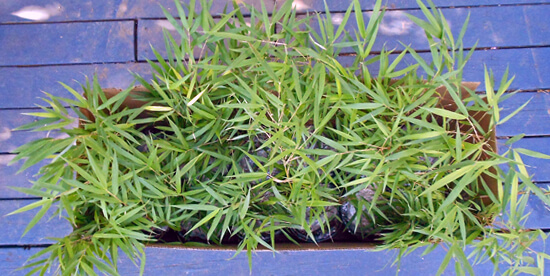 1 gallon bamboo plants strapped in and ready to be sealed. Unpacking Bare Root PlantsYou will be sent tracking details as soon as your plants are shipped. Unpack your plants as quickly as possible after they are delivered. We use two types of boxes, side-sealing and top-sealing. For boxes that are taped along the whole length you can cut the tape on either side and remove the plant bundles by cutting the tape holding the bundle to the bottom. For boxes that are sealed on the top and bottom, it is easiet to open the bottom of the box (the shipping label is at the top) and pull the bundle of plants out straight out. Check that the box is empty as there can be a second bundle of plants stuck towards the top.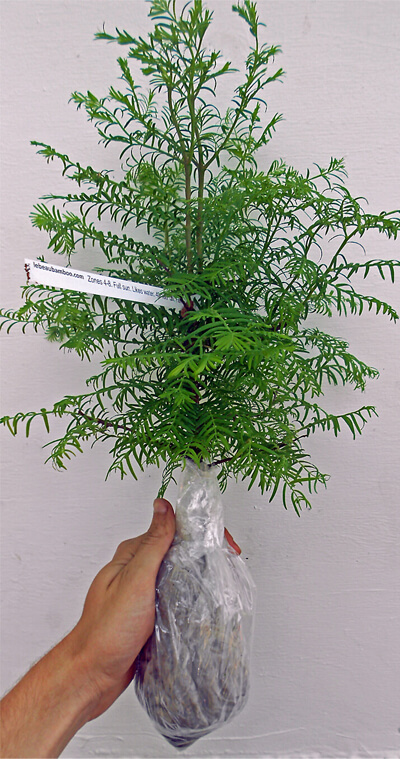 A bundle of trees. What if I am not able to plant right away?You can usually leave the plants in their shipping container unopened for 1-2 days if there were no shipping delays and you have received your plants from late November through February. Plants shipped when it is warmer can't stay in their packages for as long. |
Size Availability
Out of season.
Our main crop of most plants is available starting in late fall.
Additional batches of plugs and quarts are usually added in May.
Many of our plants are propagated in limited quantities and can sell out quickly when posted, get on the notification list below so you don't miss out. Add your email to be notified as soon as we have them back in stock:
This does NOT subscribe your email to any mailing lists, our system will only send an inventory notification message.
|

